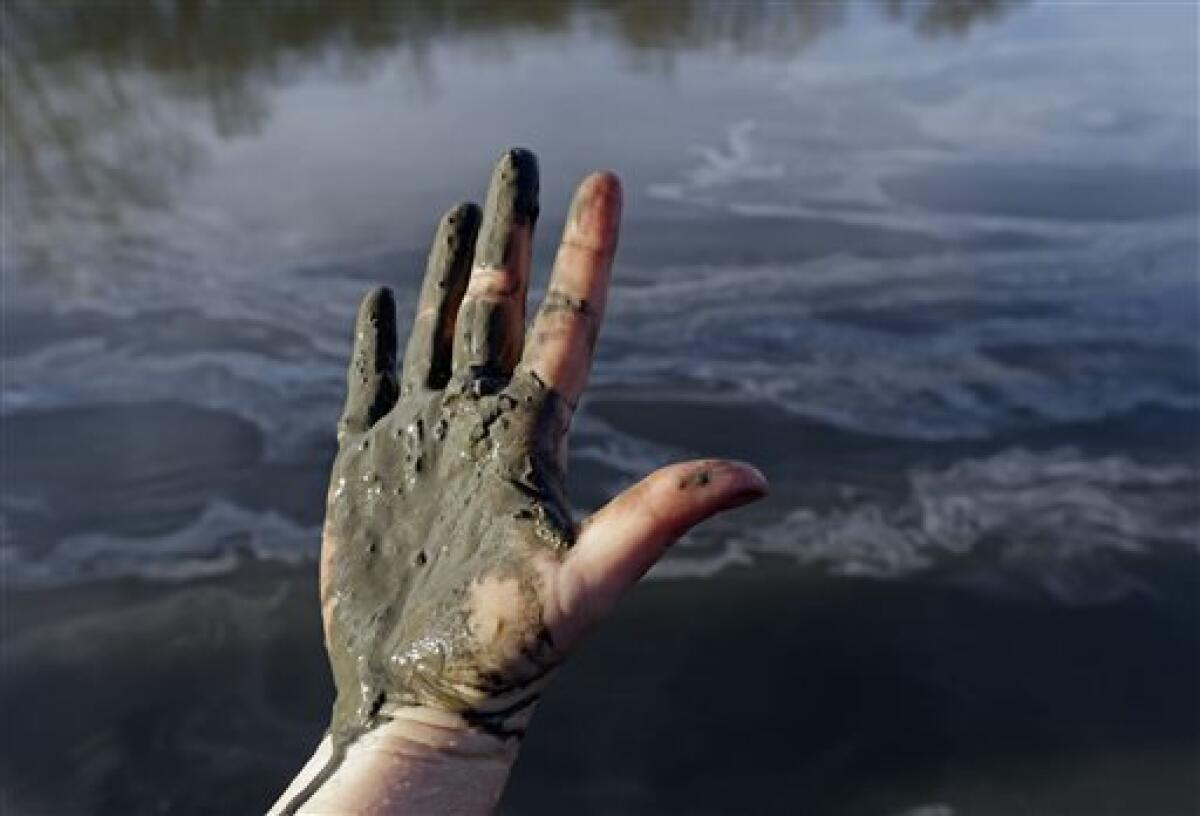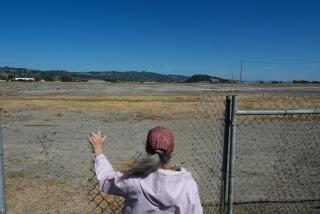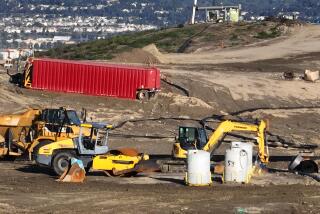North Carolina agency might get tough on utility after coal ash spill

DURHAM, N.C. — North Carolina regulators who have been accused of lax oversight abruptly announced Tuesday that they may force Duke Energy to move its riverfront ash basin to a lined landfill away from waterways after one of its plants leaked tons of toxic coal ash into a major river.
That action is precisely what environmentalists have demanded for years while accusing state regulators of allowing coal ash to seep into waterways from Duke’s 14 coal-fired plants in the state. Utilities and state regulators have long resisted those demands.
Frank Holleman, an attorney with the Southern Environmental Law Center, called the proposed move “something we have been begging, urging and suing for.”
Renewed attention has been focused on coal ash storage since a massive ash spill Feb. 2 from a Duke Energy plant in Eden, N.C. The spill polluted the Dan River for at least 70 miles in North Carolina and Virginia.
The state Department of Environmental and Natural Resources said Tuesday that it may try to “eliminate all coal ash waste discharges coming from this facility” by modifying the state permit governing the site of Duke’s 27-acre coal ash basin on the Dan River.
“We are taking swift and appropriate action to address a catastrophic failure at the Dan River Power Plant,” Tom Reeder, director of the North Carolina Division of Water Resources, said in a statement.
The move is a dramatic reversal by an agency that had previously downplayed the severity of the spill, and that moved last summer to block environmentalists’ lawsuits that would have required Duke to move the ash basins. In the days after the spill, the agency worked closely with Duke while reassuring residents that the spill posed no serious threat.
Duke, which also issued its own press releases minimizing the effects of the spill, initially said 52,000 to 82,000 tons of ash had spilled. It later reduced the estimate to between 30,000 to 39,000 tons. The spill released 27 million gallons of contaminated water.
Federal prosecutors have launched a criminal investigation into the relationship between the agency and Duke regarding coal ash, including the Dan River spill.
A Duke Energy spokesman, Thomas C. Williams, said in a statement Tuesday: “We will respond to the state and work to determine the most appropriate resolution. As we have stated, our company is taking another look at how we manage ash basins.”
By law, according to the environmental agency, it must give Duke 60 days to respond to any permit changes.
Holleman of the Southern Environmental Law Center called on the agency to require Duke to move all 32 of its coal ash basins in the state to lined landfills. He said Duke, which has apologized for the spill, should “truly be accountable and clean up the Dan River site and all their coal ash sites.”
In a letter to Duke Energy, dated Monday, Reeder wrote that his agency was reconsidering the Dan River facility permit in response to “changed conditions at the site” of the spill.
Any changes to the permit “will be considered independent of [the agency’s] work to assess and impose appropriate penalties for the coal ash spill,” Reeder said in his statement.
The statement contrasts with instructions Reeder gave to agency employees in a videotaped speech in July. He told them their primary job was not to impose penalties for violations of environmental rules but to assist “customers” — whom Reeder described as those seeking permit applications.
“Your job is not to bring down a huge compliance and enforcement penalty,” Reeder said in the video. “You job is to help him get back into compliance.”
Reeder said the agency had a “moral obligation” to “relieve the regulated community of that burden.”
Coal ash is residue from burning coal for electricity. For decades utilities have stored ash mixed with water in unlined basins, or lagoons, many of them next to rivers or lakes.
Last summer environmental groups attempted to sue Duke in federal court under the Clean Water Act, seeking to force the utility to shut down 32 basins and store ash in dry lined landfills away from waterways. The state environmental agency sued Duke in state court, blocking the environmentalists’ federal suits.
The agency and Duke reached a settlement that did not require the utility to move or clean up the basins and proposed a $99,000 fine on the nearly $50-billion company. After the Feb. 2 spill, the agency asked a state judge to put the agreement on hold.
The spill coated the Dan River bed with ash for at least 70 miles and left a five-foot mound of ash 15 feet wide and 75 feet long on the river bottom near the spill site, according to the U.S. Fish and Wildlife Service.
Municipal water officials in Danville and South Boston, two Virginia towns downstream from the spill, have said normal filtering and treatment of water drawn from the Dan River has made it safe to drink. But health officials have warned residents to stay away from the river and not to eat fish from the Dan.
Follow L.A. Times National on Facebook
More to Read
Sign up for Essential California
The most important California stories and recommendations in your inbox every morning.
You may occasionally receive promotional content from the Los Angeles Times.











